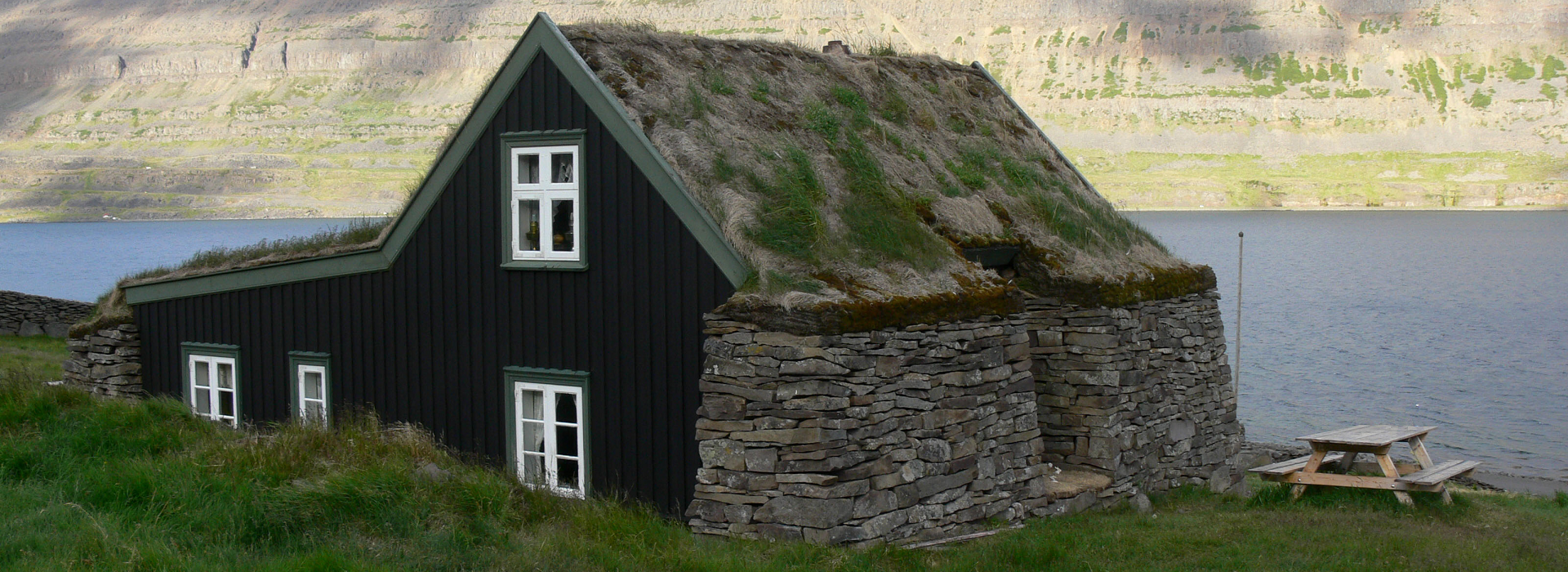The farmhouse is amongst the smallest in Iceland, only 29 meters square with a high roof. The architect Hjörleifur Stefánsson describes the farm in his book Andi Reykjavikur (The Spirit of Reykjavik):
From the rocks that were cleared out of the field in order to grow a pasture the families built this small and modest house which follows no rigid regulations about beauty but only the traditions of the poor man who utilizes what is nearby to make a shelter for himself and his loved ones at as little cost as possible. But the house is simply beautiful and its beauty appeals to most of us as we straightforward understand how it came about and it tells a pretty story of a hard battle of survival.
The walls of flat stone that surround the little pasture belonging to Litlibær are noteworthy both because of their careful craftsmanship and also because of the tremendous amount of sheer hard work put into their construction. A part of these walls has without doubt come from the pasture of Litlibær but the sheer number of stones involved runs into the hundreds of tons, so evidently large volumes must have been hauled in from further afield. It is likely that stones have been collected in piles in autumn and transported on sledges over the snow to their destination in wintertime. It is not possible to estimate with any accuracy the age of these structures but they have doubtless been there for centuries.
Behind the farm there were two outdoor kitchens which were primarily used for making Icelandic «slátur» that is to say sausages from blood and liver of sheep mixed with rye flour. The kitchen was also used for washing wool.
